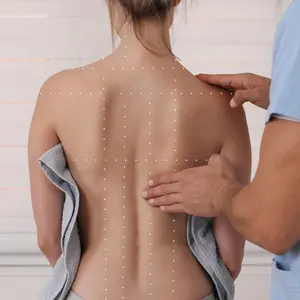

Integrative Health and Wellness

Integrative Health and Wellness
3 Integrative Ways to Treat a Migraine
Migraine headaches affect an estimated 20% of the American population, and because they are often misdiagnosed, that percentage may actually be much higher.
Conventional therapies work for migraines are most likely the first recommendations made by doctors (e.g., prescribing medications and tracking behaviors, situations, and foods that trigger migraines or increase their frequency).
However, integrative medicine approaches may help address common migraine triggers and frequency of attacks, as well as decrease symptoms during an attack.
Acupuncture
Acupuncture is the practice in which a trained specialist stimulates specific points on the skin (called acupoints), usually with a needle, which increases the release of chemicals like endorphins in the body and brain. These chemicals, which are naturally-produced pain reducers, may impact how a person experiences pain.
A systematic review (22 trials with 4,985 participants) that looked at the effectiveness of acupuncture for episodic migraine prevention concluded that acupuncture is an effective supplemental treatment for people who suffer from migraines.
Another systematic review and meta-analysis (28 randomized controlled trials with 2,874 patients) that looked at the impact of acupuncture on migraines reported that acupuncture had less adverse side effects, was more effective, and improved intracranial blood circulation when compared with medications. Acupuncture also reduced the frequency of migraine attacks and increased treatment effectiveness more than placebo acupuncture.
Mindfulness Meditation
Meditation, a practice that involves consciously exerting control over your breathing and attending nonjudgmentally to the present moment, has multiple physiological and chemical benefits, including decreased heart rate, blood pressure, and cortisol levels.
A meta-analysis of 10 randomized controlled trials and one nonrandomized, controlled clinical trial (with 315 patients included) looked at people with migraine or tension headaches and found that mindfulness meditation significantly improved pain intensity and decreased headache frequency when compared to a control group. Specifically, mindfulness-based stress reduction (MBSR) had the greatest impact on pain intensity and an intervention of eight weeks had the greatest impact on symptom reduction.
A randomized controlled trial that looked at the impact of MBSR on 40 participants with migraine and/or chronic tension headaches found that headache pain and quality of life significantly improved after eight weeks of MBSR.
Biofeedback
Biofeedback is a self-regulation technique which can help people learn to control physiological processes (e.g., heart rate, brainwaves, breathing, temperature, muscle contraction, skin charge, and sweat gland activity) through the monitoring of these processes on a computer screen or personal device. The device converts these physiological processes into visual or auditory information and enables the participant to change these processes through the use of breath, posture, thoughts, and expressions.
Biofeedback can be done with or without a biofeedback-trained professional and has been found to help with relaxation and decrease stress and blood pressure. A study that looked at 37 patients with migraines who received neurofeedback and biofeedback three times a week for an average of six months found that the intervention was more effective in decreasing headache frequency than medication alone. The benefits of the intervention remained for an average of 14.5 moths after the treatment ended.
Another study of 27 patients with migraines who received eight, 30-minute sessions of a biofeedback intervention (EMG-biofeedback, temperature-biofeedback, and relaxation training) found that migraine intensity significantly decreased after the conclusion of the eight sessions compared to the control group. The intervention also decreased headache frequency by 1.9 days and significantly improved headache-related disability, psychological stress, depression, anxiety, and irritation.
REFERENCES
Jonas, W. (2021, January 15). 3 integrative approaches to effectively treat migraine headaches. https://drwaynejonas.com/3-integrative-approaches-to-effectively-treat-migraine-headaches/


 By
By







